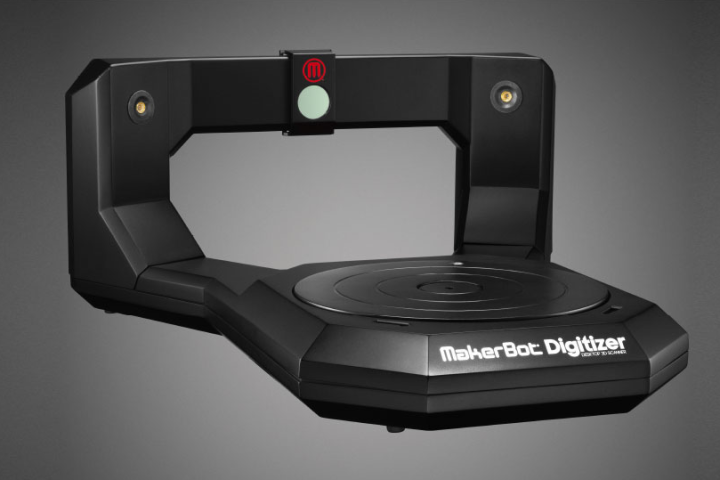
In case you haven’t noticed, 3D printers are all the rage these days. People are using 3D printers to print Aston Martin replicas, there’s a number of household items you “manufacture,” and even NASA’s bringing a 3D printer onto the International Space Station. But with all these 3D printables, you either need to download the code from a site like Thingiverse, or create the 3D code yourself with your printer’s included software. What if you want to print a replica of something that already exists without building the code yourself? MakerBot, one of the leading innovators in 3D printing, has the solution: the Digitizer 3D Scanner, which is available for pre-order today.

According to the company, the Digitizer isn’t for everyone. “The MakerBot Digitizer is for early adopters, experimenters, and visionaries who want to be pioneers in Desktop 3D Scanning,” the MakerBot Digitizer FAQ says. “This includes, but is not limited to, architects, designers, creative hobbyists, educators, and artists.” What MakerBot isn’t flat out saying though is that this is one expensive toy. The Digitizer starts at $1,400 with an extra $150 for MakerCare, totaling $1,550. Considering the Replicator 2 goes for $2,200, and the Replicator 2X will cost you $2,800, 3D printing proves to be an expensive hobby. We imagine the price tags for 3D printers and scanners will go down over the next few years, but for now, you might want to start saving up.
According to MakerBot, not everything will scan well, such as objects that have shiny, reflective, or fuzzy surfaces. Also, things that are dark in color absorb the laser line, and also have a hard time scanning well.
It’s only a matter of time before we have a 3D MFP that scans, prints, and faxes. Just kidding on that last one there. Check out the video below to see MakerBot CEO Bre Pettis put the Digitizer to work.


